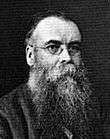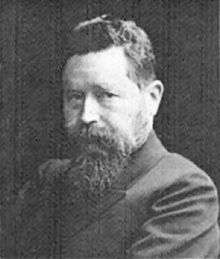German federal election, 1919
German federal election, 1919
.svg.png)
|
| 19 January 1919 (1919-01-19) |
|
|
All 423 seats in the Weimar National Assembly
212 seats needed for a majority |
| Turnout |
83.0% |
| |
First party |
Second party |
Third party |
| |
.jpg) |
 |
 |
| Leader |
Hermann Müller |
Adolf Gröber |
Friedrich von Payer |
| Party |
SPD |
Centre |
DDP |
| Leader since |
1919 |
1917 |
1918 |
| Seats won |
165 |
91 |
75 |
| Popular vote |
11,509,048 |
5,980,216 |
5,641,825 |
| Percentage |
37.9% |
19.7% |
18.6% |
|
| |
Fourth party |
Fifth party |
Sixth party |
| |
 |
 |
|
| Leader |
Arthur von Posadowsky-Wehner |
Hugo Haase |
Rudolf Heinze |
| Party |
DNVP |
USPD |
DVP |
| Leader since |
1919 |
1917 |
1919 |
| Seats won |
44 |
22 |
19 |
| Popular vote |
3,121,479 |
2,317,290 |
1,345,638 |
| Percentage |
10.3% |
7.6% |
4.4% |
|

|
Electoral results by districts (in German), strongest parties:
■ – SPD
■ – USPD
■ – Centre/BVP
■ – DNVP
Hatched: occupied territory (Alsace-Lorraine, Posen) pending Treaty of Versailles |
|
Federal elections were held in Germany on 19 January 1919,[1] although members of the standing army in the east voted for their representatives only on 2 February. The elections were the first of the new Weimar Republic following World War I and the Revolution of 1918–19. It was also the first German election held using proportional representation and with women's suffrage. It is also reckoned as the first truly free and fair all-German election, as it was the first to be held after the scrapping of the old constituencies that grossly over-represented rural areas. The voting age was lowered to 20 from 25 in the last Reichstag election of 1912.
Austrian citizens living in Germany were allowed to vote, in the same way that German citizens living in Austria were also allowed to vote in the Austrian Constitutional Assembly election in the same year.[2]
From its inaugural session on 6 February, the National Assembly (Nationalversammlung) functioned as both a constituent assembly and unicameral legislature. On 13 February, provisional Reichspräsident (President) Friedrich Ebert appointed Philipp Scheidemann Reichsministerpräsident (Minister President, the office was renamed Chancellor only when the Weimar Constitution came into force in August 1919). Scheidemann's government replaced the revolutionary Rat der Volksbeauftragten (Council of the People's Deputies). The supporting parties of the "Weimar Coalition" (SPD, Zentrum and DDP) together won 76.2% of the votes cast. Voter turnout was 83.0%.[3]
Results
| Party |
Votes |
% |
Seats |
|---|
| Election of 19 January 1919 |
| Social Democratic Party (SPD) |
11,509,048 |
37.86 |
163 |
| Centre Party |
5,980,216 |
19.67 |
91 |
| German Democratic Party |
5,641,825 |
18.56 |
75 |
| German National People's Party |
3,121,479 |
10.27 |
44 |
| Independent Social Democratic Party |
2,317,290 |
7.62 |
22 |
| German People's Party |
1,345,638 |
4.43 |
19 |
| Bavarian Peasants' League |
275,125 |
0.91 |
4 |
| German-Hanoverian Party |
77,226 |
0.25 |
1 |
| Schleswig-Holsteinische Bauern- und Landarbeiterdemokratie |
57,913 |
0.19 |
1 |
| Braunschweig State Electoral Association |
56,858 |
0.19 |
1 |
| Mecklenburg Village League |
10,891 |
0.04 |
0 |
| German Peace Party |
3,503 |
0.01 |
0 |
| German Officials', Employees' and Middle Class Party |
1,438 |
0.00 |
0 |
| Christian Social Party |
664 |
0.00 |
0 |
| Middle Class Party |
640 |
0.00 |
0 |
| German Social Aristocracy |
279 |
0.00 |
0 |
| Democratic Middle Class Party |
208 |
0.00 |
0 |
| Social Reform Party |
45 |
0.00 |
0 |
| Invalid/blank votes |
124,562 |
– |
– |
| Total |
30,524,848 |
100 |
421 |
| Registered voters/turnout |
37,362,100 |
83.02 |
– |
| Election of 2 February 1919 – representatives of standing troops in the East |
| Social Democratic Party |
7,804 |
60.04 |
2 |
| Independent Social Democratic Party of Germany |
1,945 |
14.96 |
0 |
| German Democratic Party |
1,681 |
12.93 |
0 |
| Non-partisan lists |
1,389 |
10.69 |
0 |
| German People's Party |
74 |
0.57 |
0 |
| German National People's Party |
62 |
0.48 |
0 |
| Centre Party |
43 |
0.33 |
0 |
| Invalid/blank votes |
390 |
– |
– |
| Total |
13,388 |
100 |
2 |
| Source: Nohlen & Stöver, Gonschior.de |
| Popular Vote |
|---|
|
|
|
|
|
| SPD |
|
37.86% |
| Zentrum |
|
19.67% |
| DDP (FVP/NLP) |
|
18.56% |
| DNVP (DKP/DRP) |
|
10.27% |
| USPD |
|
7.62% |
| DVP (NLP/DRP) |
|
4.43% |
| Other |
|
1.58% |
| Reichstag seats |
|---|
|
|
|
|
|
| SPD |
|
38.72% |
| Zentrum |
|
21.62% |
| DDP (FVP/NLP) |
|
17.81% |
| DNVP (DKP/DRP) |
|
10.45% |
| USPD |
|
5.23% |
| DVP (NLP/DRP) |
|
4.51% |
| Other |
|
1.66% |
References
.jpg)



